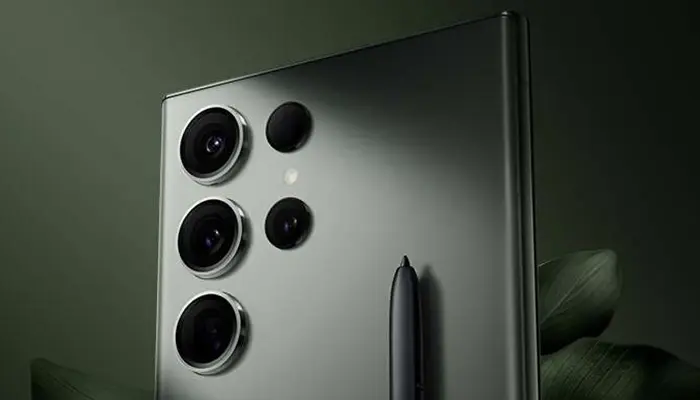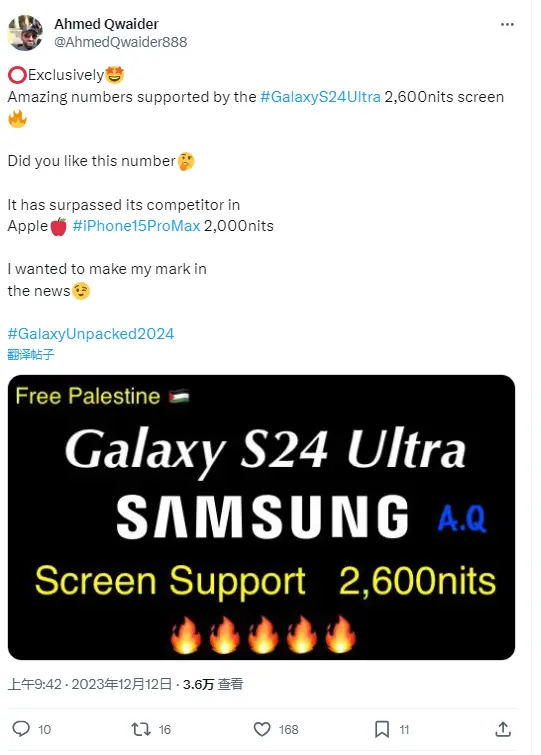As the much-anticipated Samsung Galaxy S24 series draws near its expected January 17, 2024 unveiling, more details are emerging, particularly about the Galaxy S24 Ultra‘s display. A recent leak by tipster Ahmed Qwaider suggests that the Dynamic AMOLED 2x screen on the Galaxy S24 Ultra could boast an impressive peak screen brightness of 2600 nits. Its 100 nits higher than the previous rumors indicating 2500 nits peak brightness all models in the lineup—Galaxy S24, Galaxy S24+, and Galaxy S24 Ultra.

Brighter than the iPhone 15 Pro Max (2000 nits) and Pixel 8 Pro (2400 nits)
If these leaks are accurate, the Galaxy S24 Ultra would surpass competitors like the iPhone 15 Pro (2000 nits) and the Google Pixel 8 Pro (2400 nits). However, it’s essential to note that the peak brightness does not ensure a higher perceivable brightness in every scenario. Usually the phone reaches the rated peak brightness in only certain scenarios like playing an HDR video in a well-lit environment. Additionally, factors like device temperature also influences the display brightness in a certain condition. Nonetheless, the phone is capable of outshining its competitors in certain scenarios – this is what we know so far.

This upcoming Ultra flagship is expected to be Samsung’s first ‘AI Phone,’ integrating various Generative AI features. Among these features are AI-generated wallpapers, real-time voice call language translation, text summarization in Samsung Notes, and the capability to expand images by filling in non-existent content that matches the surroundings. The Galaxy S24 series is also rumored to support emergency texting via satellite connectivity.
Additionally, the Galaxy S24 Ultra is anticipated to showcase a 200-million-pixel main camera, a 12-megapixel ultra-wide-angle lens, a 10-megapixel 10x telephoto lens, and a 50-megapixel 5x telephoto lens. Reportedly, Samsung is also improving the AI object recognition engine to improve its imaging capabilities in different lighting conditions.
Related:
- Download the best GCam APK for Samsung Galaxy S23 Ultra
- OnePlus 12 Flagship Phone is now available for Pre-Order
- Giztop’s Christmas Holiday Savings: Unwrap Joy with Exclusive Discount
- Xiaomi 13 Ultra Premium Camera Phone is now only $799
- Best Apple Watch Cases in 2023: Spigen, Otterbox, Casetify & More






